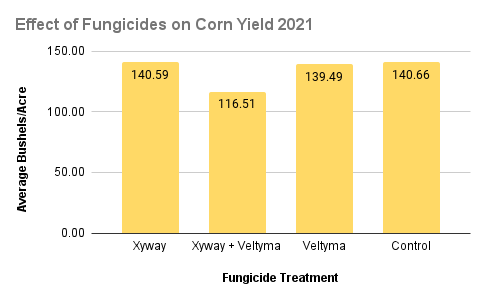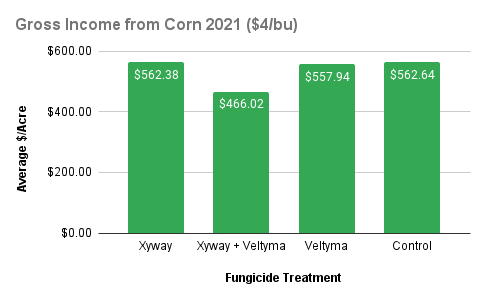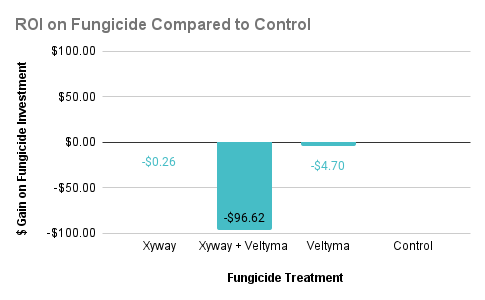Effect of Xyway LFR on Corn in 2021
go.ncsu.edu/readext?837002
en Español / em Português
El inglés es el idioma de control de esta página. En la medida en que haya algún conflicto entre la traducción al inglés y la traducción, el inglés prevalece.
Al hacer clic en el enlace de traducción se activa un servicio de traducción gratuito para convertir la página al español. Al igual que con cualquier traducción por Internet, la conversión no es sensible al contexto y puede que no traduzca el texto en su significado original. NC State Extension no garantiza la exactitud del texto traducido. Por favor, tenga en cuenta que algunas aplicaciones y/o servicios pueden no funcionar como se espera cuando se traducen.
Português
Inglês é o idioma de controle desta página. Na medida que haja algum conflito entre o texto original em Inglês e a tradução, o Inglês prevalece.
Ao clicar no link de tradução, um serviço gratuito de tradução será ativado para converter a página para o Português. Como em qualquer tradução pela internet, a conversão não é sensivel ao contexto e pode não ocorrer a tradução para o significado orginal. O serviço de Extensão da Carolina do Norte (NC State Extension) não garante a exatidão do texto traduzido. Por favor, observe que algumas funções ou serviços podem não funcionar como esperado após a tradução.
English
English is the controlling language of this page. To the extent there is any conflict between the English text and the translation, English controls.
Clicking on the translation link activates a free translation service to convert the page to Spanish. As with any Internet translation, the conversion is not context-sensitive and may not translate the text to its original meaning. NC State Extension does not guarantee the accuracy of the translated text. Please note that some applications and/or services may not function as expected when translated.
Collapse ▲Summary: Two separate research trials were performed by NC State Extension using Xyway LFR fungicide in the Piedmont of North Carolina in 2021. One trial was on silage and the other on grain corn. The use of Xyway LFR had neither a positive nor a negative effect on crop yield. 2021 was a dry year and disease pressure was minimal. These trials should be repeated in higher pressure years to reveal more information about Xyway performance under different conditions. There were no long-term negative effects on silage yield from using Xyway LFR at planting.
Silage Trial: This replicated trial was planted at the N.C. Department of Agriculture and Consumer Services Piedmont Research Station in Salisbury, NC on April 29, 2021, in a Lloyd clay loam with a no-till planter. Starter fertilizer (10-27-0) was used in both control and Xyway treated plots at a rate of 10 gallons/acre in-furrow. The variety planted was AgVenture AV3917YHB and is a dual-use 117-day variety. Seeding rate was 32,000 seeds/acre. Harvest was on August 12, 2021. Samples were sent to DairyOne for NDFD 30-hour and mycotoxin analysis. For the 30-hour analysis they measured forage quality for crude protein (CP), neutral detergent fiber (NDF) and dry matter (DM). This resulted in no significant differences between the treatments. No mycotoxins were seen in any of the samples.
Watch our video below to see crop progress from start to finish and hear the full report from the Agents.
The silage trial was conducted by Nancy Keith, Laura Elmore, Morgan Watts, Mackenzie Hall, and Jenny Carleo with support from Dr. Ron Heiniger, Ryan Heiniger, Ben Winslow, and the crew of the NCDA&CS Piedmont Research Station.
Grain Corn Trial: The grain corn trial was conducted by Agents Heather Schronce and Jenny Carleo. AgriGold A646-12VT2PRIB was planted on April 14, 2021, at 28,000 seeds per acre at ASR Grain in Shelby, NC. All treatments received 15 gallons of 32% UAN (53 units of N) via 2×2 at planting. The Xyway treatment was tank-mixed with the 2×2 starter fertilizer. Treatments were replicated 3 times (2 replicates were used in the data analysis). Commercial planting, spraying, and harvesting equipment was used throughout the study. The Veltyma treatment was applied at V10 on June 18, 2021, at 7oz/A. Harvest was on September 7, 2021. Grain weights for each plot were taken with the NC State weigh wagon accurate to 2 lbs. This season was very dry during critical periods of corn development which visibly reduced yield and increased plant stress. Grey Leaf Spot, Northern Corn Leaf Blight, and Southern Corn Leaf Blight incidence was minimal.
Germination Results: Stand counts were performed on May 12, 2021. The Xyway plots had 1.8% more plants germinated than the other plots. There was no distortion or stunting of plants in this 2×2 study in the Xyway plots. The increase in number of plants per square foot did not result in a yield benefit.
Yield Results: Average yield for this field was 134 bu/A, 56.2 lbs./bu test weight and 17.3% moisture. Applications of Xyway or Veltyma did not increase yield.
Crop Income: This graph shows the dollar amount of corn sold per acre at $4 per bushel for each of the treatments.
Return on Investment (ROI): The formula used to calculate ROI = [(Yield x $4/bu) – Cost of Fungicide]
There was no financial benefit of applying fungicides to corn in this trial in 2021. The cost of the fungicides exceeded the yield benefit of applying them. In our trial the Xyway + Veltyma treatment brought $96.62 less income than the control. This is because yield was reduced, and, expenses were higher, since two fungicides were applied instead of just one or none.
2021 was a year with low disease pressure for grain crops. This project should be repeated in a year with high disease pressure to reveal differences between treatments under those circumstances. Many thanks to the farmers and employees at ASR Grain in Shelby, NC for the research concept and work they did on this project with us.
FMC donated the Xyway product and paid for the silage analysis. All research tasks and data collection were performed exclusively by NC State University and N.C. Department of Agriculture and Services employees.





